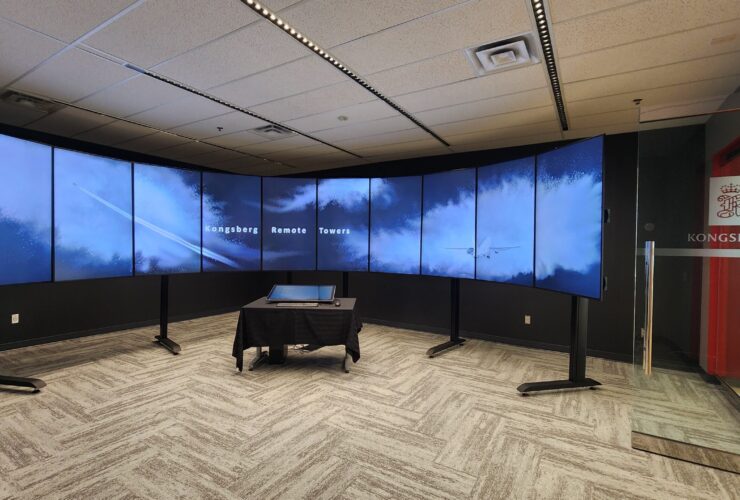Back to Work in the Office – What Leaders and CEOs Need to Consider
PEO Leadership, a firm offering executive leadership support, offers tips on what should be considered for the transition in a post-COVID work environment.

According to Statistics Canada and the U.S. Census Bureau, at the beginning of 2021, a third of households in Canada and the U.S. reported that they were mostly working from home during the pandemic. As restrictions ease and organizations look to reopen, leaders need to consider strategies around work, the workplace and the workforce.
“We’ve been used to working from home – walking the dog, dealing with the kids, not having to commute or travel, and having regular meals with the family. If we want to ensure our organization’s future success, we need to communicate to our workforce our plans sooner rather than later to ensure we allow for an adjustment period before everyone is back in the office.” explains Leon Goren, president and chief executive officer of PEO Leadership. “There are definitely going to be some challenges for businesses who are ready to transition back to an in-person work environment. It’s better to plan ahead and consider your options.”
In order to hit the ground running, there are a few key considerations you should be taking into account as a leader:
- How will your organization be operating? Will you work primarily in the office, primarily from home, or in a hybrid model? Is your organization able to even consider various options and still meet its corporate goals and objectives in this new post-Covid environment? If you are considering a hybrid approach, will you have mandatory days for employees to be present and should you be concerned about density and/or the capacity of the office? Have you thought about 2 or 3 days in the office and which days they would fall on (ie. is it fair that some will have long weekends while others will have to be in the office on either the Monday or Friday each week)?
- What is your internal company position on employees receiving the COVID-19 vaccine? Will you expect your staff to have the vaccine before returning to work? Will you be tracking uptake? Are you able to ask those questions? Will mask wearing be mandatory or optional in the workplace? Is there a possibility that it may create discrimination in the workplace?
- How will you conduct your business development? How do you plan on engaging current and potential clients? Will you allow customers to visit the office? Will your employees be expected to travel to customer locations – locally, nationally and internationally?
- How will your decisions affect competing for talent and employee retention? As the economy roars back and accelerates, finding the right, capable talent will become more competitive than ever. One great way to ensure your actions fall in line with your employee comfort levels is sending out a survey to various departments to understand what their preferences are. This could help guide your next step and keep your best talent.
Further to the above overarching considerations, leaders must also realize that there are other areas of concern that require a case-by-case approach that might be unique to each department, each team, and even the individual.
- Team cohesiveness. Many teams have not been working in the same location for over a year and there may be challenges in getting everyone back on the same page. It’s a good idea to ease into it and have some team building activities. Have you identified what departments can work from home and which departments should really be in the office to ensure the organization is able to meet its objectives? How important is collaboration in these departments? Does it need to be in-person, or can it really be done via zoom? How will you onboard and train your new hires and still ensure you maintain a high performance, engaging and inspirational culture? Historically, working in silos has been a major roadblock for organizations working on improving their performance and culture. COVID-19 has pushed many organizations backwards into silos once again – what can you do to ensure that your teams are agile, able to communicate openly and with trust? What are you doing to ensure everyone is aligned to the organization’s vision and mission?
- Mental health and anxiety. Unfortunately, one of the underlying effects of COVID is that people who were in good health and had no mental health issues, are now suffering from anxiety, depression, and burnout. Some of them may have developed self-destructive habits that were hidden in the confines of their home. It’s important to have a plan in place on how to support these employees.
- Family situations. Some of your employees may have difficulty coming back to work because of changes that have taken place in their personal lives. School and daycare closures will make it impossible for parents of young children to be in the office, or even to work regular office hours. Some employees may be taking care of elderly parents or sick family members. What will your company policy look like to accommodate these challenges?
- What’s changed, what’s stayed the same. Does your office need to be reimagined and reinvigorated independent of which model you choose to work? Will you have to put in new ventilation systems or new seating plans? There may be many things that will change in the office and some that will stay the same. It’s important for leaders to communicate these changes to their employees so that they know what is being done to keep them safe and give them a sense of control over their surroundings.
Every business leader should realize the importance of pulling together a return-to-work plan that includes numerous corporate policies to address the above issues and challenges. In every organization today, employees are making life decisions that will impact how and if they return to work. Many are moving to places that will not allow them to easily travel to their offices. Others may be selling one of their cars with the anticipation that travel will no longer be a priority. The reality is employees are not sitting still in regard to their life decisions and too many leaders are not communicating their plans effectively or in a timely manner. It definitely makes sense to not only plan early but also ensure that you connect with your employees during this strategic process.
Corporate policies will enable an organization to hit the ground running: to establish some normalcy, structure, and routine that will be helpful to everyone. You will need to consider whether you have intentional days for intentional activities, if you chose to operate with a hybrid model. Most importantly, these corporate policies will set the stage to allow you as a leader to be fair, firm and consistent as you work on strengthening your workplace culture.
PEO Leadership offers an executive leadership community that represents over 100 business leaders, successful entrepreneurs, and top executives. Its services include peer advisory boards, executive advisors/coaches, community connections, strategic business advice, an annual world-class leadership conference, and thought leadership events including PEO Leadership’s “The Way Forward” live webcast and podcast. The company is owned by Leon Goren, who has over 25 years of leadership experience in helping business owners and executives realize their personal and organizational goals.
PEO Leadership provides leadership advisory services in six categories, for presidents/C-suite executives of large national and multinational organizations, entrepreneurs of large national and multinational companies, global executives, small business entrepreneurs, senior executives, and businesses in transition. PEO Leadership is offering a free 8 Week Executive Program to those who are eligible. For more information, please visit https://peo-leadership.com.
About PEO Leadership
PEO Leadership is a Canadian peer-to-peer leadership advisory firm that has been the destination for business leaders to regularly meet and discuss important issues, solve problems and explore new opportunities since 1991. The organization provides a safe and highly confidential environment, with PEO Executive Advisors who facilitate stimulating and astute dialogue to leverage the collective experience, creativity, intellect and wisdom of the Peer Advisory Board and the PEO Leadership Community at large. They support, cultivate and accelerate business leaders’ leadership excellence to achieve great impact through the organizations they lead, the communities they serve and the lives they live. Current members include Umbra, Miele, Crayola, ThinkOn and Nestle. For more information about the company and services, visit the site at: https://peo-leadership.com.
Contact Author
CHER MURPHY
PEO Leadership
571-263-2128


